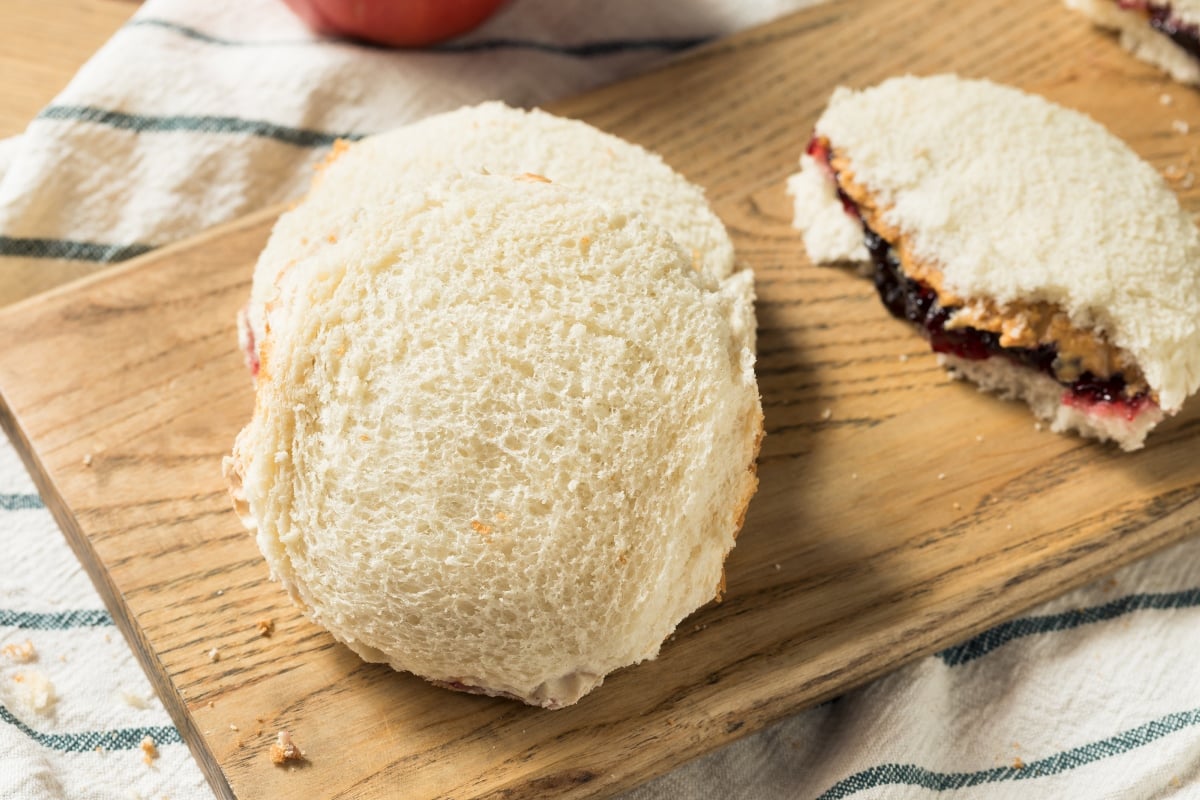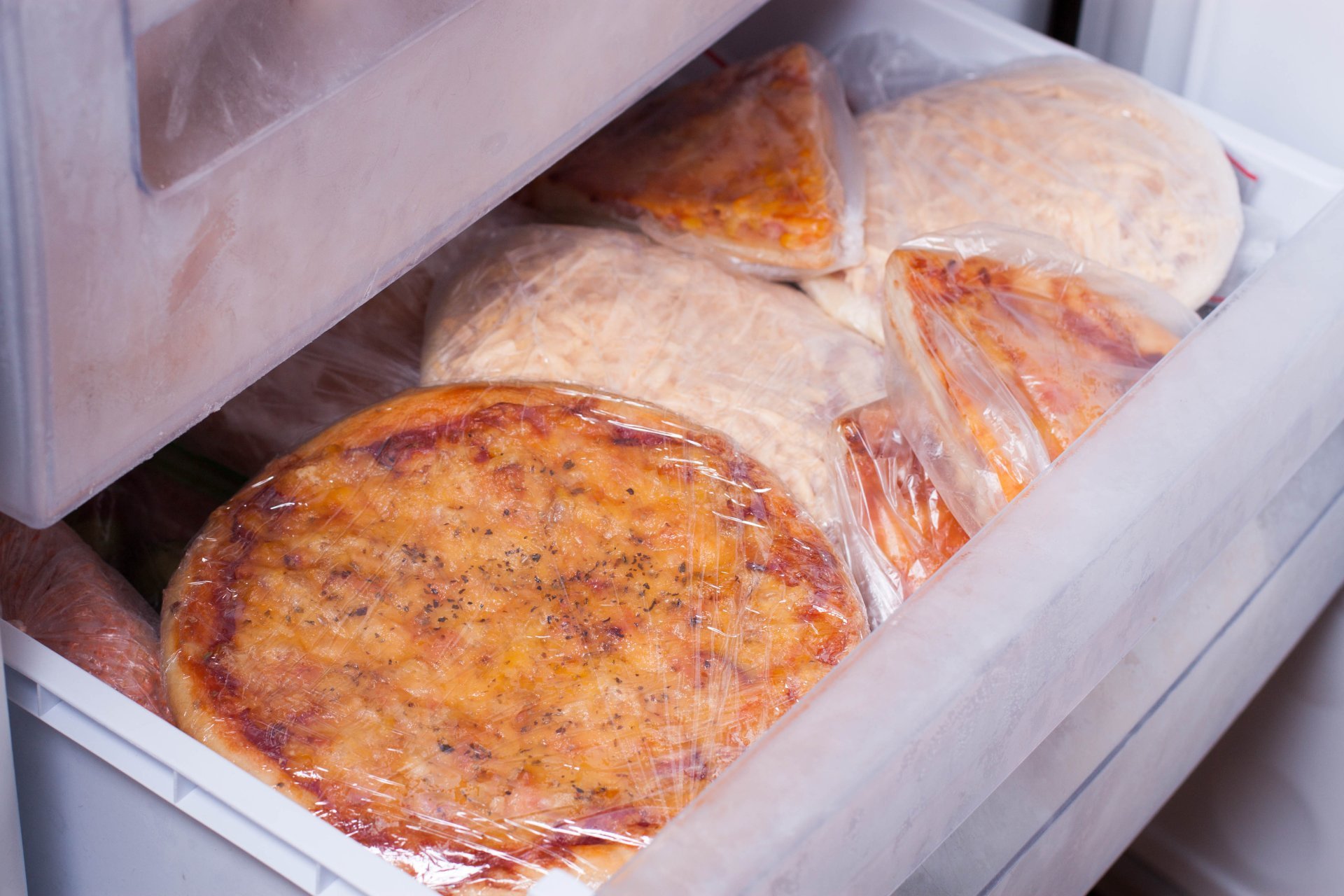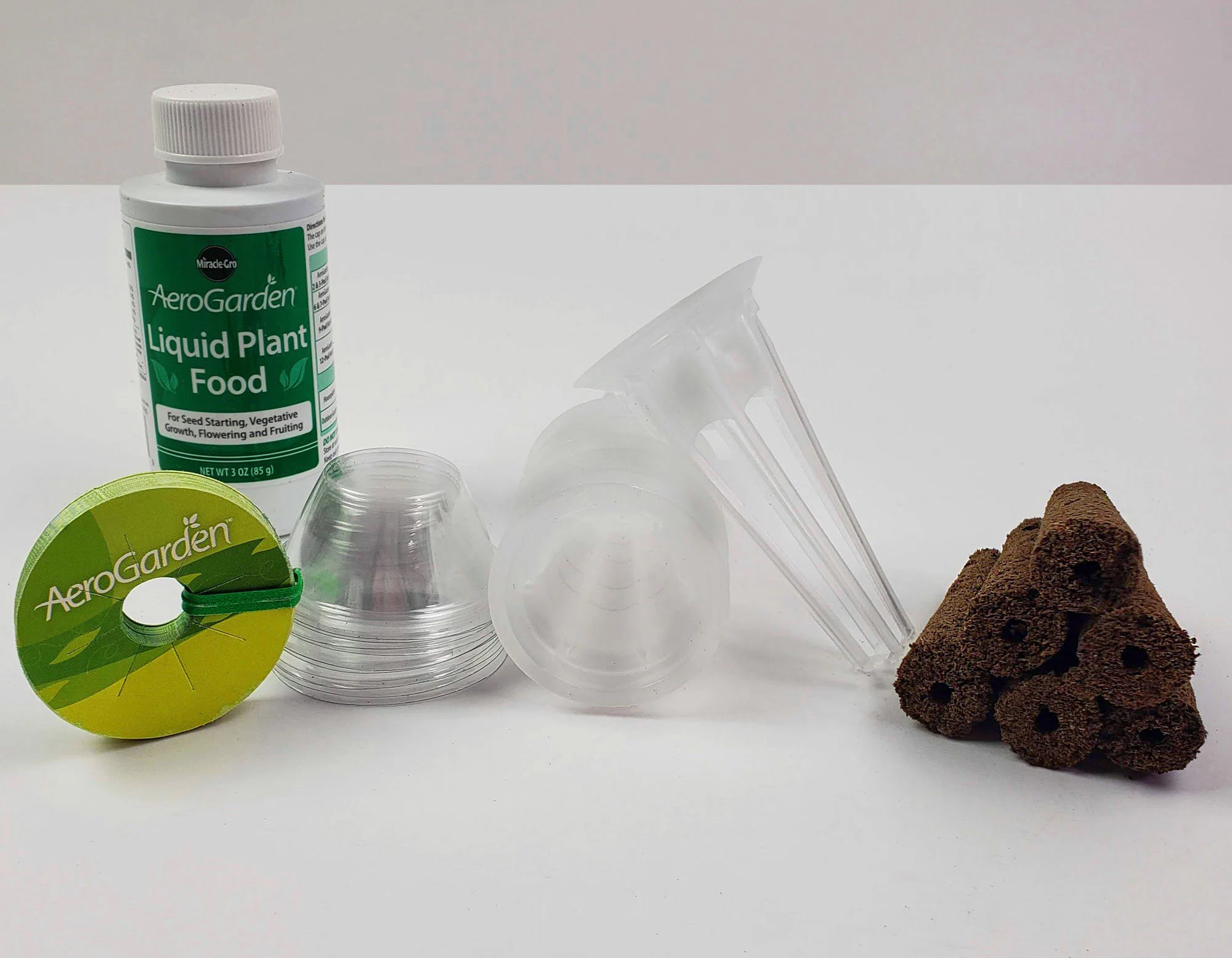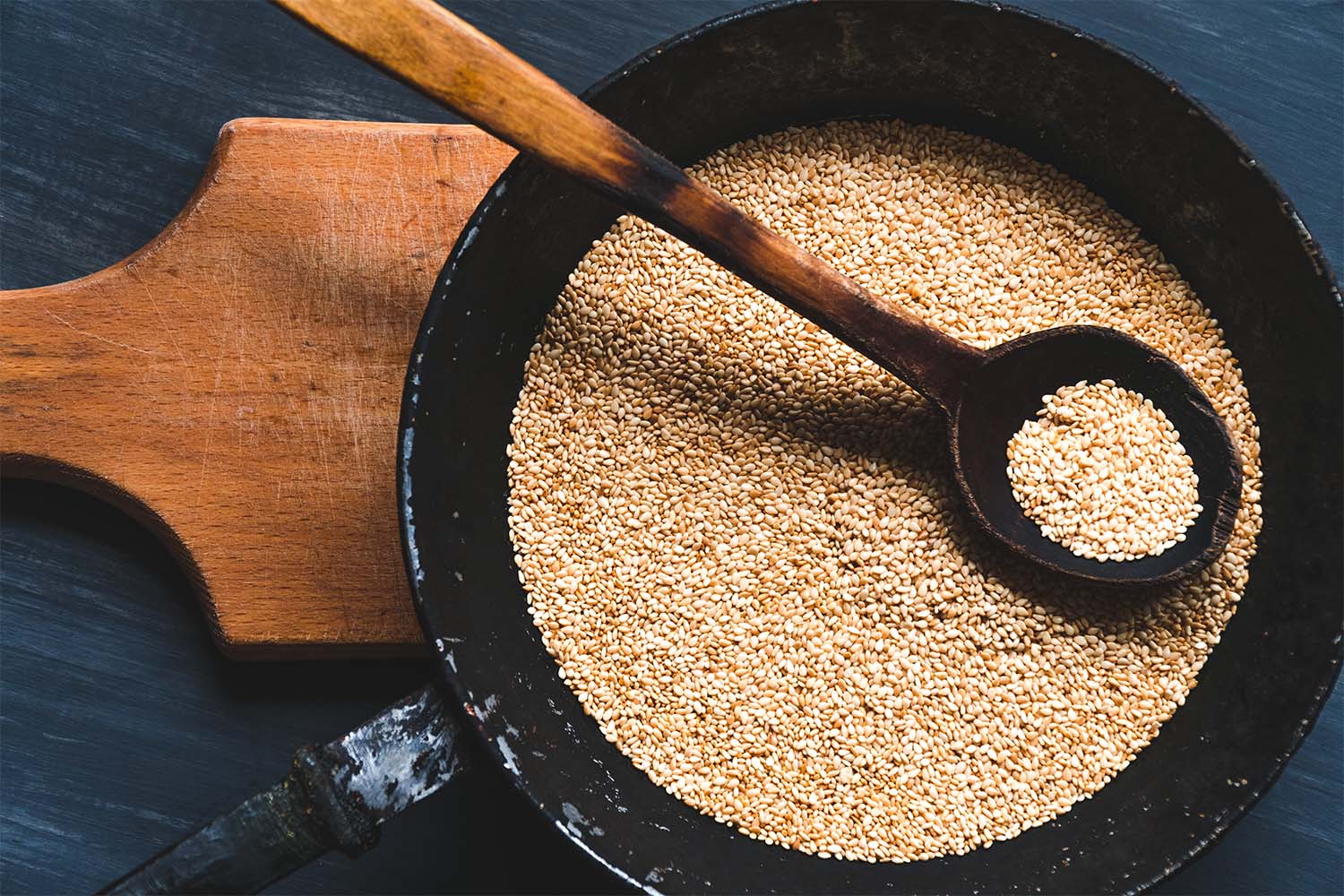

Articles
How Long Do Seeds Last In Freezer
Modified: October 20, 2024
Discover how long seeds can last when stored in the freezer and learn helpful tips for preserving the viability of your seed collection. Read more in our informative articles.
(Many of the links in this article redirect to a specific reviewed product. Your purchase of these products through affiliate links helps to generate commission for Storables.com, at no extra cost. Learn more)
Introduction
Welcome to the world of seeds! Whether you are an avid gardener, a plant enthusiast, or simply someone looking to preserve the genetic essence of a particular plant species, understanding how to effectively store seeds is essential. While there are various methods for seed storage, one approach that has gained popularity is freezing seeds.
The concept of freezing seeds may seem unconventional to some, but it has proven to be a useful technique for preserving seeds’ viability and extending their shelf life. In this article, we will explore the factors influencing seed longevity, why freezing seeds is an effective storage method, and how to optimize the storage conditions for long-term seed preservation.
Key Takeaways:
- Freezing seeds can effectively extend their viability and shelf life by slowing down metabolic activity and inhibiting deterioration, providing a practical long-term storage solution for preserving valuable plant genetic material.
- Proper thawing and preparation techniques are essential for maximizing the viability of frozen seeds, ensuring successful germination and healthy plant growth. Gradual thawing, acclimatization, and careful monitoring contribute to the success of frozen seed preservation.
Read more: How Long Do Beans Last In The Freezer
Factors Affecting Seed Longevity
The longevity of seeds depends on several key factors. Understanding these factors will help you make informed decisions about the storage and preservation of seeds.
Seed Type: Different seed types have varying degrees of longevity. Some seeds, like those of lettuce or onions, have a relatively short lifespan of around one to two years, while others, such as beans or tomatoes, can remain viable for five to ten years or more.
Moisture Content: Excessive moisture is one of the major factors that can reduce the longevity of seeds. Seeds with high moisture content tend to deteriorate rapidly and lose their viability. It is crucial to ensure that seeds are properly dried before storage to minimize the risk of fungal growth and degradation.
Temperature: Seeds are sensitive to temperature fluctuations. Higher temperatures can accelerate seed aging and decrease their viability. On the other hand, cooler temperatures slow down the seed’s metabolic rate, extending its longevity. Freezing seeds takes advantage of this principle, as freezing temperatures can dramatically reduce the rate of deterioration.
Light Exposure: Light can have a detrimental effect on seed viability, especially for light-sensitive seeds. Exposure to light can cause the production of reactive oxygen species, which can lead to oxidative damage and reduced seed longevity. Properly storing seeds in opaque containers or dark storage areas can help protect them from light exposure.
Genetic Factors: The genetic makeup of seeds can also influence their longevity. Some plant species naturally produce seeds that have a longer shelf life, while others have shorter viability periods. Understanding the natural characteristics of specific seeds can help guide you in determining the most appropriate storage method.
Handling and Storage Conditions: The way seeds are handled and stored can significantly impact their longevity. Rough handling or exposure to excessive heat or moisture during storage can damage seeds, reducing their viability. Providing optimal storage conditions, such as controlling temperature and humidity, can help preserve the quality and longevity of seeds.
By considering these factors, you can make informed decisions about the storage and preservation of seeds. Freezing seeds, as we will explore next, is a method that can provide optimal conditions for extending seed longevity and maintaining their viability.
Freezing Seeds: An Effective Storage Method
Freezing seeds is a tried and tested method for preserving seed viability and extending the shelf life of various plant species. This storage method takes advantage of the fact that cold temperatures can slow down the metabolic activity of seeds, effectively preserving their quality over an extended period.
When seeds are frozen, their biological processes are greatly reduced, including respiration and enzyme activity. This reduction in metabolic activity helps to maintain the integrity of the seed and prevent deterioration. Freezing also inhibits the growth of microbes and other organisms that can cause seed damage or decay.
Additionally, freezing seeds can be a practical storage solution, especially when dealing with a large quantity of seeds or when seeking to preserve seeds for longer periods. Freezers provide a controlled and stable temperature environment, ensuring the longevity of seeds without the need for constant monitoring or maintenance.
However, it is important to note that not all seeds are suitable for freezing. Some seeds have specific requirements or characteristics that make freezing unsuitable, such as seeds with high oil content or those with delicate structures. It is necessary to research and determine the suitability of the specific seed species before attempting to freeze them.
In the following sections, we will delve into the optimal storage conditions for freezing seeds and provide recommendations for seed species that are known to respond well to this storage method.
Optimal Storage Conditions for Seeds in Freezers
While freezing seeds can be an effective storage method, maintaining the optimal conditions is crucial for preserving seed viability and longevity. Here are some key factors to consider when storing seeds in freezers:
Temperature: The ideal freezer temperature for seed storage is between -18°C to -20°C (-0.4°F to -4°F). This temperature range ensures that the seeds remain in a state of suspended animation, minimizing any potential damage or deterioration. It is important to note that fluctuating temperatures can be detrimental to seed viability, so maintaining a consistent temperature is essential.
Humidity: While humidity is less of a concern when storing seeds in freezers compared to other storage methods, it is still important to minimize moisture exposure. Moisture can lead to ice crystal formation, which can damage the seed’s cellular structure. Ensure the seeds are well-dried before freezing, and package them in airtight containers or moisture-resistant bags to prevent moisture absorption during freezing.
Container Selection: Choosing the right containers for freezing seeds is crucial. Opt for airtight containers that provide good insulation against temperature fluctuations and protect the seeds from moisture and odors. Glass jars with rubber seals or plastic containers with tight-fitting lids are popular choices. Remember to label the containers with the seed species and date of storage for easy identification.
Pre-freezing Preparation: Before placing seeds in the freezer, it is recommended to conduct basic seed treatment methods such as drying, cleaning, and removal of any debris or non-seed materials. This preparation helps to ensure that only high-quality seeds are stored and reduces the risk of introducing contaminants into the freezer environment.
Organizing and Monitoring: Proper organization is crucial when storing seeds in freezers. Consider using clear containers or creating an inventory system to easily locate specific seeds when needed. Regularly monitor the freezer temperature and check for any signs of moisture or condensation inside the containers. If moisture is detected, it may be necessary to remove and dry the seeds before resealing them in a new container.
Following these optimal storage conditions will help to maximize the longevity and viability of frozen seeds. However, it’s important to note that each seed species may have specific requirements, so it’s advisable to research and understand the unique needs of the seeds you intend to freeze.
In the next section, we will provide a list of seed species that are known to respond well to freezer storage.
Recommended Seed Species for Freezer Storage
While not all seeds are suitable for freezer storage, there are several seed species that have been known to respond well to this preservation method. Here are some recommended seed species that can be successfully stored in the freezer:
Tomatoes (Solanum lycopersicum): Tomato seeds can retain their viability for several years when properly stored in the freezer. They are a popular choice for freezing due to their longer shelf life and the ease of germination even after freezing.
Beans (Phaseolus spp.): Various bean species, including common beans, black beans, and kidney beans, can tolerate freezing temperatures. Freezing beans can extend their shelf life and preserve their germination capacity for many years.
Pumpkins and Squash (Cucurbita spp.): Pumpkin and squash seeds are suitable for freezer storage. They can retain their viability for several years, making them a great option for preserving these popular garden favorites.
Peppers (Capsicum spp.): Pepper seeds, including bell peppers, chili peppers, and jalapenos, can be successfully frozen for long-term storage. Frozen pepper seeds maintain their viability and germination rates, allowing you to grow a variety of peppers from preserved seeds.
Cucumbers (Cucumis sativus): Cucumber seeds can also withstand freezing temperatures. Freezing cucumber seeds can help maintain their viability and ensure successful germination for future cultivation.
Lettuce (Lactuca sativa): While lettuce seeds have a relatively short shelf life compared to other species, freezing can help extend their viability by a year or two. This can be particularly useful for gardeners looking to save and store their own lettuce seeds.
These are just a few examples of seed species that have shown success with freezer storage. However, it’s important to note that individual seed varieties within each species may have different storage requirements. It is always recommended to research the specific needs of the seed species and follow proper storage guidelines to ensure the best results.
Now that we have discussed the recommended seed species for freezer storage, let’s take a look at the common mistakes to avoid when freezing seeds in the next section.
Seeds can last for several years in the freezer if stored properly. Make sure to use airtight containers to prevent moisture and freezer burn. Label the containers with the date of storage for easy tracking.
Read more: How Long Do Donuts Last In The Freezer
Common Mistakes to Avoid When Freezing Seeds
Freezing seeds can be an effective method for long-term storage, but it’s important to avoid certain mistakes that can compromise the viability and longevity of the seeds. Here are some common mistakes to avoid when freezing seeds:
Not Properly Drying Seeds: Moisture is the enemy when it comes to seed storage. If seeds are not properly dried before freezing, they can suffer from moisture damage, which can lead to reduced viability. Make sure to thoroughly dry seeds by air-drying or using other appropriate drying methods before placing them in the freezer.
Using Improper Containers: The container you choose for freezing seeds is critical. Avoid using containers that are not airtight or that can easily allow moisture or odors to enter. Use glass jars with rubber seals or plastic containers with tight-fitting lids to ensure proper insulation and protection from the external environment.
Not Labeling Containers: For efficient organization, it’s important to label the containers with the seed species and the date of storage. This will help you easily identify and locate specific seeds when needed. Failure to label containers can lead to confusion and potential loss of valuable seed collections.
Ignoring Temperature Fluctuations: Fluctuating temperatures within the freezer can have a negative impact on seed viability. It’s important to maintain a consistent temperature within the recommended range for seed storage. Avoid frequent opening and closing of the freezer, as this can lead to temperature fluctuations. Also, be mindful of the freezer’s location, as extreme temperature variations in the surrounding environment can affect the freezer’s performance.
Improper Thawing Techniques: When it’s time to use the frozen seeds, improper thawing techniques can cause damage to the seeds. Avoid directly exposing seeds to room temperature or hot water, as rapid temperature changes can affect their viability. Instead, allow the seeds to gradually come to room temperature by placing them in a cool location or inside the refrigerator for a few hours before use.
Not Monitoring Seed Viability: Seed viability can gradually decline over time, even when stored in optimal conditions. It’s important to periodically test the germination rate of stored seeds to ensure their viability. If the germination rate drops significantly, it might be time to consider replenishing your seed collection with fresh seeds.
By avoiding these common mistakes, you can maximize the success of freezing seeds and maintain the quality and viability of your stored seeds for future use.
Next, we will explore some tips and techniques for maximizing the viability of frozen seeds.
Maximizing Seed Viability: Tips and Techniques
To ensure the maximum viability and success of frozen seeds, here are some tips and techniques to consider:
Proper Seed Selection: Select high-quality seeds that are healthy, mature, and free from any signs of disease or damage. Starting with viable seeds increases the chances of successful germination and healthy plant growth.
Seed Treatment: Some seeds benefit from pre-treatment methods to enhance their germination rate and increase viability after freezing. These treatments may include scarification (scratching the seed coat), stratification (exposing seeds to cold temperatures), or soaking in water for a specific period. Research the specific requirements for each seed species to determine whether pre-treatment is necessary.
Packaging: Proper packaging is crucial for maintaining seed viability. Use airtight containers or moisture-resistant bags to prevent moisture absorption and protect the seeds from temperature fluctuations. Consider using desiccant packs or silica gel packets to absorb any residual moisture that may be present.
Quantity: It’s recommended to freeze seeds in smaller quantities rather than in large batches. Freezing seeds in smaller amounts allows you to take out only what you need without repeatedly exposing the entire batch to temperature changes.
Seed Testing: Periodically test the germination rate of stored seeds to assess their viability. This can be done by placing a sample of seeds on a damp paper towel, sealing it in a plastic bag, and keeping it in a warm location. After a specific period, check the percentage of seeds that have germinated. If the germination rate is significantly lower than expected, consider replenishing your seed collection with fresh seeds.
Rotation: It’s a good practice to rotate your seed collection regularly. Use the oldest seeds first to ensure their viability and freshness. By rotating your seed stock, you prevent seeds from sitting in storage for extended periods and potentially losing viability.
Maintain Records: Keep detailed records of your seed collection, including the species, date of freezing, and any pertinent notes or observations. This information can help you track the age of the seeds and identify any patterns in germination success over time.
Proper Thawing and Acclimatization: When it’s time to use frozen seeds, thaw them gradually to room temperature by placing them in a cool location or inside the refrigerator. Allow the seeds to acclimate for a few hours before sowing or planting. This gradual thawing and acclimatization process helps minimize shock to the seeds and increases their chances of successful germination.
By following these tips and techniques, you can maximize the viability of frozen seeds and increase the chances of successful germination and healthy plant growth.
As we conclude this article, it’s important to note that while freezing seeds can be an effective storage method, it’s always a good idea to consult specific guidelines and recommendations for the seed species you want to freeze. Each seed has unique characteristics that may require specific storage considerations.
Happy freezing and may your seed preservation efforts bring forth flourishing gardens in the future!
Thawing and Preparing Frozen Seeds for Planting
When the time comes to use the frozen seeds you have stored, proper thawing and preparation techniques are essential to ensure successful germination and healthy plant growth. Here are some steps to follow when thawing and preparing frozen seeds:
Step 1: Gradual Thawing: Remove the frozen seeds from the freezer and allow them to thaw gradually. Avoid exposing the seeds to sudden temperature changes, as this can cause shock and potentially damage the delicate structures within the seeds. Place the seeds in a cool location or inside the refrigerator for a few hours to slowly bring them to room temperature.
Step 2: Acclimatization: Once the seeds have thawed, it’s important to acclimate them to their intended planting environment. This step helps the seeds adapt to the conditions they will encounter and increases their chances of successful germination. Keep the seeds in a well-ventilated area with moderate temperature and humidity levels for a few hours, allowing them to adjust to the surrounding conditions.
Step 3: Seed Treatment (If Necessary): Depending on the specific seed species, certain pre-treatment methods may be beneficial to improve germination rates. This could include methods such as scarification, stratification, or soaking the seeds in water. Research the specific requirements for the seeds you are working with to determine if any pre-treatment is necessary or recommended.
Step 4: Sowing or Planting: Once the seeds have thawed and acclimated, you can proceed with sowing or planting them. Follow the recommended planting depth and spacing for each particular seed species. Ensure that the planting medium or soil is well-draining to prevent waterlogging, which can lead to seed rot or fungal growth. Keep the soil evenly moist throughout the germination process, taking care not to overwater.
Step 5: Maintain Ideal Growing Conditions: Once the seeds are sown or planted, provide them with the ideal growing conditions for their specific species. This includes providing adequate sunlight or artificial light, maintaining proper temperature and humidity levels, and providing appropriate fertilization and watering as needed.
Step 6: Monitor Germination and Growth: Regularly monitor the germination progress and growth of the plants from the thawed seeds. Pay attention to any signs of stress, disease, or nutrient deficiencies. Adjust the growing conditions if necessary to optimize the health and development of the plants.
By following these steps, you can effectively thaw and prepare frozen seeds for optimal germination and successful plant growth. Remember to consult specific guidelines and recommendations for the seed species you are working with, as different plants may have unique requirements.
With careful attention to thawing and preparation, your frozen seeds can go on to produce thriving plants and contribute to the beauty and productivity of your garden.
Now that you are equipped with knowledge on thawing and preparing frozen seeds, it’s time to put it into practice and enjoy the fruits of your preservation efforts. Happy planting!
Article complete.
Conclusion
Preserving the viability of seeds is essential for gardeners, plant enthusiasts, and conservationists alike. Freezing seeds has emerged as an effective method for extending seed longevity and ensuring the availability of plant genetic material for future use. By understanding the factors that affect seed longevity, the proper storage conditions for freezing seeds, and the recommended seed species for freezer storage, you can confidently embark on preserving your favorite seeds.
When freezing seeds, it is important to avoid common mistakes such as improper drying, using inadequate containers, and ignoring temperature fluctuations. By following optimal storage conditions and implementing proper thawing and preparation techniques, you can maximize seed viability and increase the chances of successful germination.
Remember, each seed species may have unique requirements, so it is crucial to research their specific needs before freezing. Additionally, regularly testing seed viability and rotating your seed collection will help ensure that your stored seeds remain viable and productive for years to come.
Freezing seeds offers a practical and long-term storage solution. It enables gardeners to preserve heirloom varieties, valuable plant genetic material, and seeds of rare or hard-to-find species. By taking the time to properly store and care for your frozen seeds, you are not only safeguarding their viability but also contributing to the conservation of plant diversity.
So, whether you are a seasoned gardener planning for future seasons or someone interested in preserving seeds for scientific research, freezing seeds can be an effective tool to extend the life and vitality of your precious plant genetic resources.
Now that you have the knowledge and techniques to freeze and preserve seeds, it’s time to embark on your seed preservation journey. Enjoy the process of saving, storing, and growing plants from your frozen seed collection, and may your efforts yield beautiful gardens and bountiful harvests for years to come!
Article complete.
Frequently Asked Questions about How Long Do Seeds Last In Freezer
Was this page helpful?
At Storables.com, we guarantee accurate and reliable information. Our content, validated by Expert Board Contributors, is crafted following stringent Editorial Policies. We're committed to providing you with well-researched, expert-backed insights for all your informational needs.















0 thoughts on “How Long Do Seeds Last In Freezer”